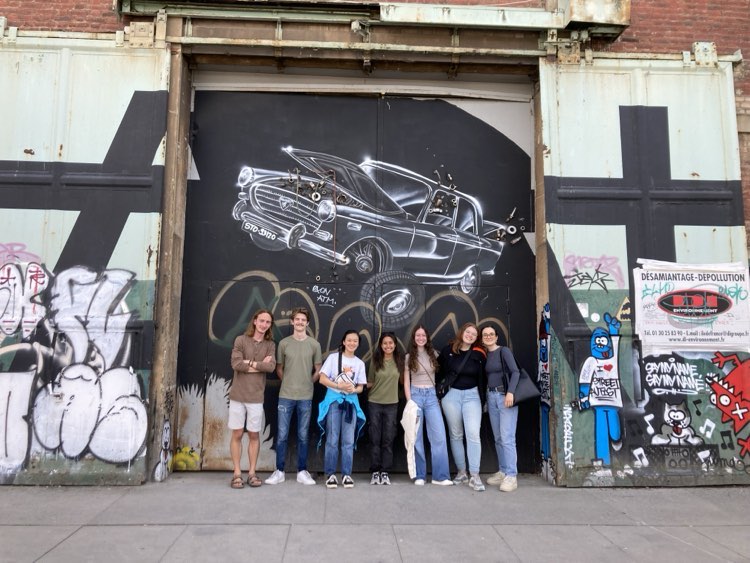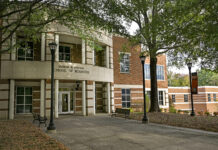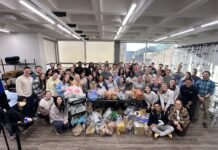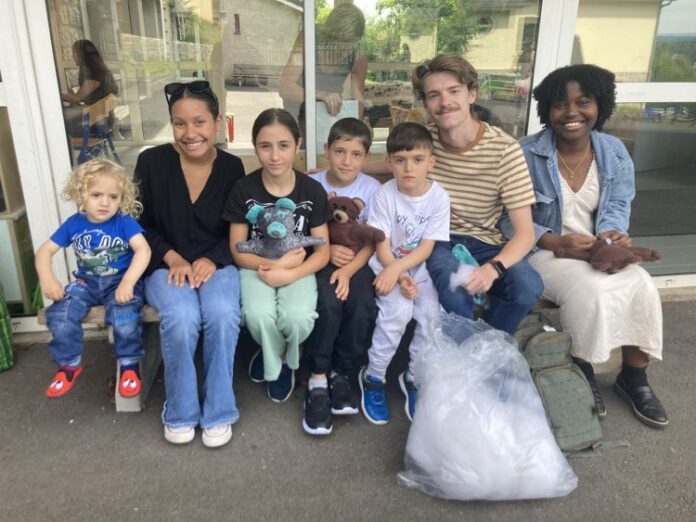
In France this summer, Mercer University students and faculty helped provide resources and comfort to families facing unimaginable hardships. During this new Mercer On Mission program, the Mercerians spent time with refugees and asylum seekers and learned about their needs while escorting them to temporary housing; serving food; and leading art therapy sessions, outdoor family activities and day camps.
Professors Dr. Katherine Roseau, Dr. Adam Keath and Hazel Caldwell led 17 students on the three-week trip in July. The students’ majors included French, international affairs, global health studies, psychology and education.
“The main purpose of the program was to show students different ways that organizations are addressing issues related to migrants in France, which includes refugees and asylum seekers and other migrants as well,” said Dr. Roseau, associate professor of French.
Noah Porter, a sophomore double-majoring in psychology and religion, said Mercer On Mission was the reason he enrolled at Mercer. He learned about the France program while attending a session with University Minister Dr. Craig McMahan during Heritage Scholars Weekend. Porter said the opportunity to work with refugees from around the world resonated with him, and he wanted to be a part of a university that not only boasted strong academics but facilitated hands-on experiences to give students new perspectives of the world.
The Mercerians split their time between Paris and Le Chambon-sur-Lignon. In Paris, they served and prepared meals alongside refugee chefs at Refugee Food, which distributes food to those in need and trains refugees to work in the restaurant industry; and Utopia 56, which provides meals and organizes temporary housing for refugees.
At the latter, the Mercerians cleaned tents and organized blankets and mats to be distributed. They also escorted families to safe locations where they could sleep.
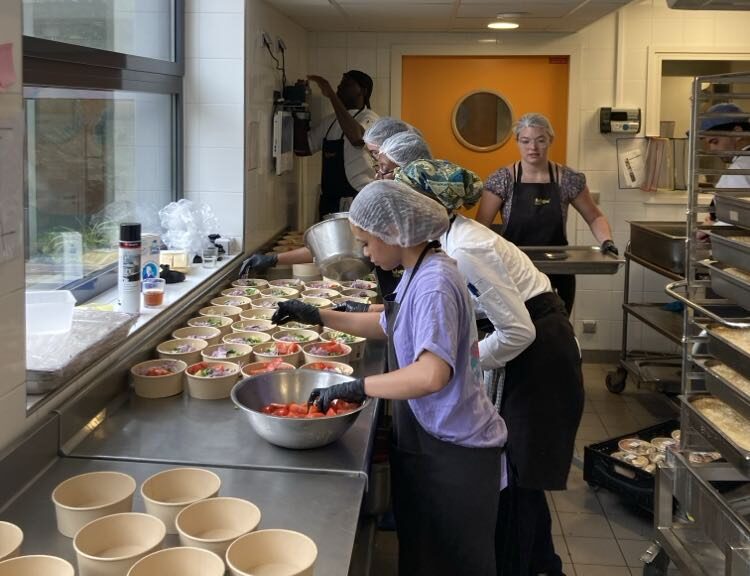
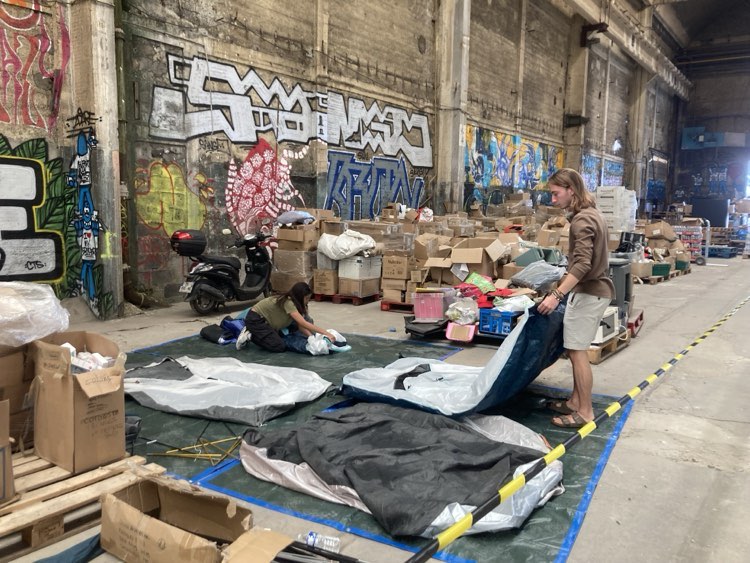
“They did a lot of boots-on-the-ground work in Paris to really understand that problem through the eyes of the refugees, since they were working with them and having conversations with them,” said Dr. Keath, assistant professor of teacher education.
Caldwell, adjunct professor of art, said one of the most poignant moments for her came while escorting a mother, father and their 4-month-old daughter on the metro to temporary lodging one evening.
“I realized it was up to me and two Mercer students to get them to safety, and all they had was their backpacks and a stroller,” she said. “They had been trying to get to France for six months. The mother had to give birth while they were on the run. I felt such a connection to them.”
Dr. Roseau said she bonded with a transgender woman trying to find a safer place for her and her husband through their shared love for the movie “The Pursuit of Happyness” starring Will Smith.
“This person really epitomized that spirit for me,” Dr. Roseau said. “She wanted me to take that away too. She said, ‘We’ll always think about each other when we think of the movie.’”
Porter said he knew the trip was going to be eye-opening after escorting the first family to temporary lodging.
“That was my first big ‘thrown into the deep end’ moment. That was very much a place of uncomfortability but also me being pushed,” he said. “With me as a Mercer student, my first time out of the United States, I’m in a new country doing things I haven’t done before … there was this place of in-betweenness and uncertainty.”

Dr. Roseau said she chose Le Chambon-sur-Lignon, in the mountains of south central France, as the team’s second service area because of its longstanding history of welcoming outsiders and asylum seekers. During the Holocaust, residents of the small town saved thousands of Jews.
Here, the Mercerians worked with CADA (Centre d’accueil pour demandeurs d’asile), an asylum seeker welcome center, and community center Centre de Loisirs, where they facilitated activities for a kids’ day camp. Many CADA volunteers travel during the summer months, and the Mercerians filled a gap in programming, Dr. Roseau said.
“I think the families enjoyed just being active and being engaged with each other through sport and activity,” said Dr. Keath, who led outdoor recreation activities at these locations. “When we were doing day camp, each (Mercer) student connected with a different kid in a different way, so there were opportunities for all of them to shine. The families were so gracious and so thankful. They were so happy for somebody to be thinking about them and caring enough to do activities with their kids.”
Caldwell, a licensed art therapist, taught the Mercer students how to lead children and adults in drawing prompts and how to actively observe the sessions.
“They felt a giant connection with these people,” Caldwell said. “It gave them a good sense of perspective on what’s going on in the world on a global scale. A lot of my students were very proud of the work they did. Several of them want to continue doing work with refugees even here locally.”
Among the art prompts, the Mercer students asked the refugees to draw a human figure from head to toe, their favorite kind of weather, and their own flag. Self-identify is important to refugees, and the latter activity aimed to instill in them a sense of autonomy, self-worth, acceptance and pride, Caldwell said.
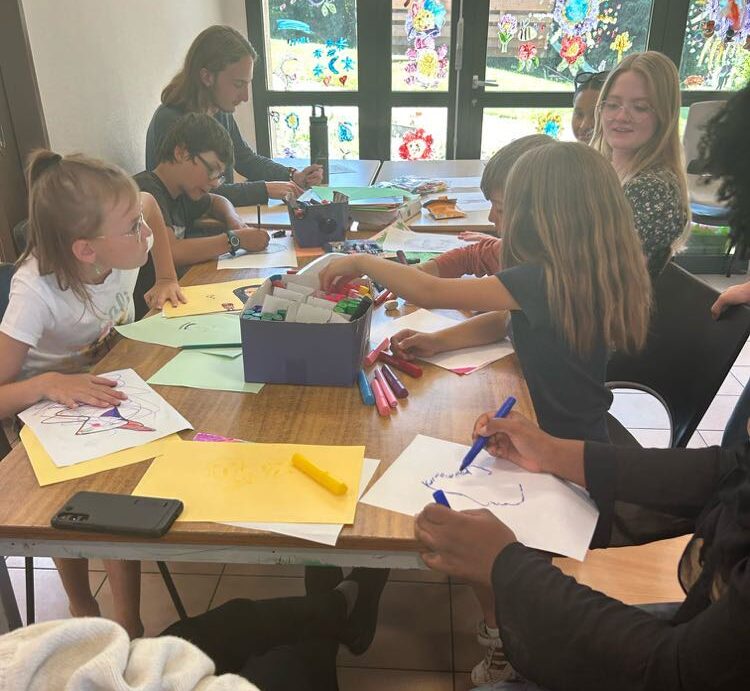
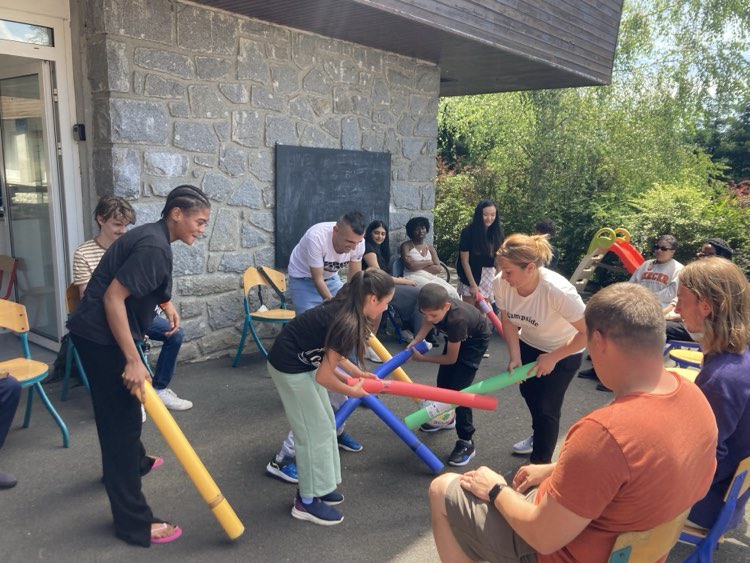
“Art has a universal language to it,” she said. “It’s one way you can really help refugees and those who have been exiled from their countries. The language doesn’t so much matter when you have art involved.”
Porter’s Spanish skills allowed him to connect with a 12-year-old Colombian refugee named Juan in Le Chambon-sur-Lignon. When Porter asked Juan to draw his future home during an art therapy session, Juan sketched a house with a picket fence, a nice car and two people, representing himself and his future wife.
“We were able to discuss ideas about Juan’s future and aspirations,” Porter said. “(Juan is) someone who’s been through so much and has such hope for the future. These people who come from these devastating paths have a chance at such brightly filled futures.”
The students’ eyes were opened to the tremendous needs that refugees and migrants face and their perseverance despite the challenges. They saw that while these humanitarian organizations are providing vital services, their resources are also limited, Dr. Roseau said. That was especially evident when students could only give out three diapers per family while working with Utopia 56, Dr. Keath said.
As part of their required coursework before the trip, the Mercer students learned about the partner organizations, participated in team building exercises, and discussed their lesson and activity plans. They also researched issues related to refugees or asylum seekers in the United States and France and updated their findings after the trip based on what they had personally witnessed, Dr. Roseau said.
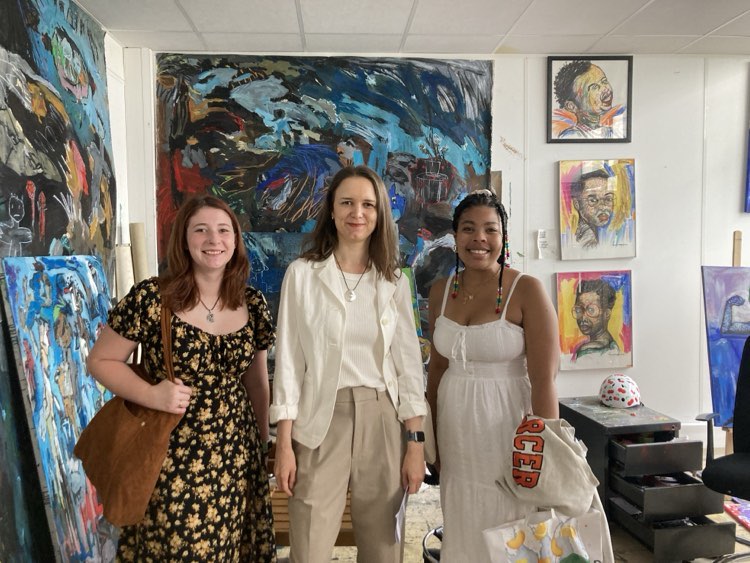
“They saw it differently when they were on the ground and working with people directly,” Dr. Roseau said of the students’ research. “They got to see them as full people who have a lot of strengths. A lot of (students) commented on how resilient and strong (the refugees) were, even when they don’t know where they’re going to sleep that night or the next night.
“We were working with people who were maybe having the worst years of their lives, but the kids were so joyful. My cheeks hurt from smiling watching them play with our students,” Dr. Roseau said.
Senior Emily Lewis, a global health studies major, said the opportunity to teach and work with children drew her to this Mercer On Mission program. She led classes for children in music, dance and theater, and adventure education. She said one of her favorite moments came when a student approached her and said “je t’adore,’ which means “I love you.”
“Something that was very meaningful was seeing how happy the kids were playing the games and that our hard work was paying off, and they loved what we were doing,” Lewis said. “I improved my confidence with teaching and leadership skills, being in front of the class, problem solving, navigating that language barrier, and making sure the games went right.”
Prior to leaving for France, Porter developed a sewing pattern for bears that could be stuffed on site and given to refugee children, creating a Build-A-Bear-type experience. He was able to give bears to four Armenian children, and that inspired another Mercer student to create three more bears to hand out. Porter said he would like to see his bear project replicated on future Mercer On Mission trips or at refugee centers in Georgia.
“It was a very sweet and tender moment that I shared with the children,” he said of giving out the bears. “All of this kind of adds on to a philosophy that I’ve slowly been exploring about what I believe to be the greatest gift in life, and that is to give one another attention. It made me happy … to make those bears for the kids and present them with something they can possess and love.”
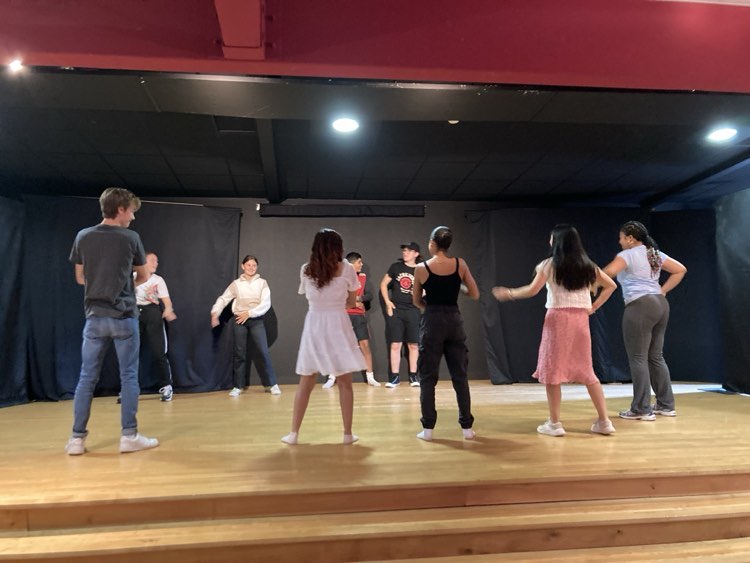
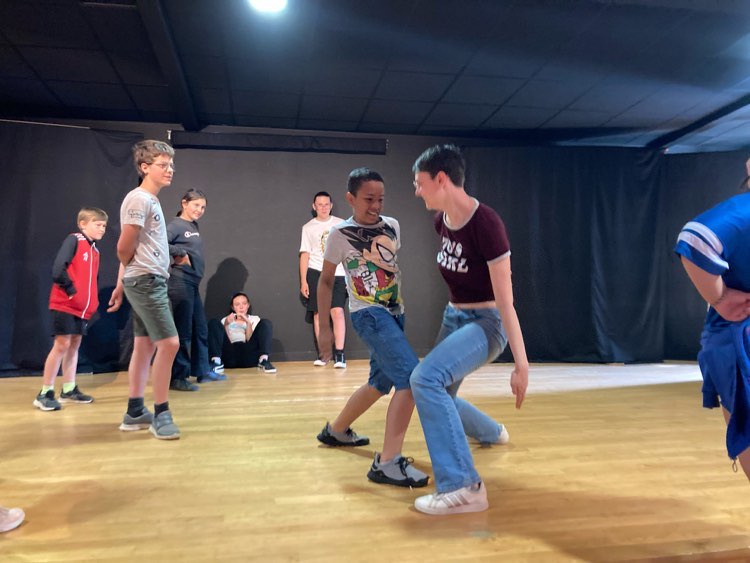
The Mercer students adapted as they faced language barriers, since most of them did not speak French, and many of the refugees did not speak French or English. They worked with refugees from countries that included Armenia, Afghanistan, Senegal, Sudan, Albania, Columbia and Angola, Dr. Roseau said.
Porter said he forged a bond with a young man named Ab from Afghanistan, despite the language barrier. The two learned to communicate through drawings and smartphone translation apps.
Students also gained valuable leadership skills.
“Coming in, a lot of the students had never been in a full-time leadership facilitation position,” Dr. Keath said. “The first couple days, they were very tentative about taking the reins and being in control of a group. But by the third or fourth day of the camp, they had really taken some ownership. I think every student took a lot of confidence away from the trip in their abilities to adapt and be able to function as part of a team and as part of a group.”
Outside of their service work, the Mercerians visited Sacré-Cœur Basilica, Montmartre, the Palace of Versailles, the Louvre, the Eiffel Tower and a collaborative workshop space for exiled artists. Some also went sailing in Marseille and hiked at Calanques National Park and Mont Mezenc.
“We see these banners that we’re supposed to change the world. It really feels like you’re making an effort to do so when you go on a Mercer On Mission like Mercer On Mission France,” Porter said. “You feel like you need to go back to Mercer, to the United States, so when you see that banner, you no longer just see that banner, but you see the faces of lives you’ve changed. Maybe changing the world looks like changing a life on a one-on-one basis. We were able to change the lives of individuals, and if that one person’s life is changed forever, if they feel that love and compassion on that one day, we’ve done enough. Our stories will inspire others … so that other Mercer students will see those banners and ask what they can do to change the world.”
